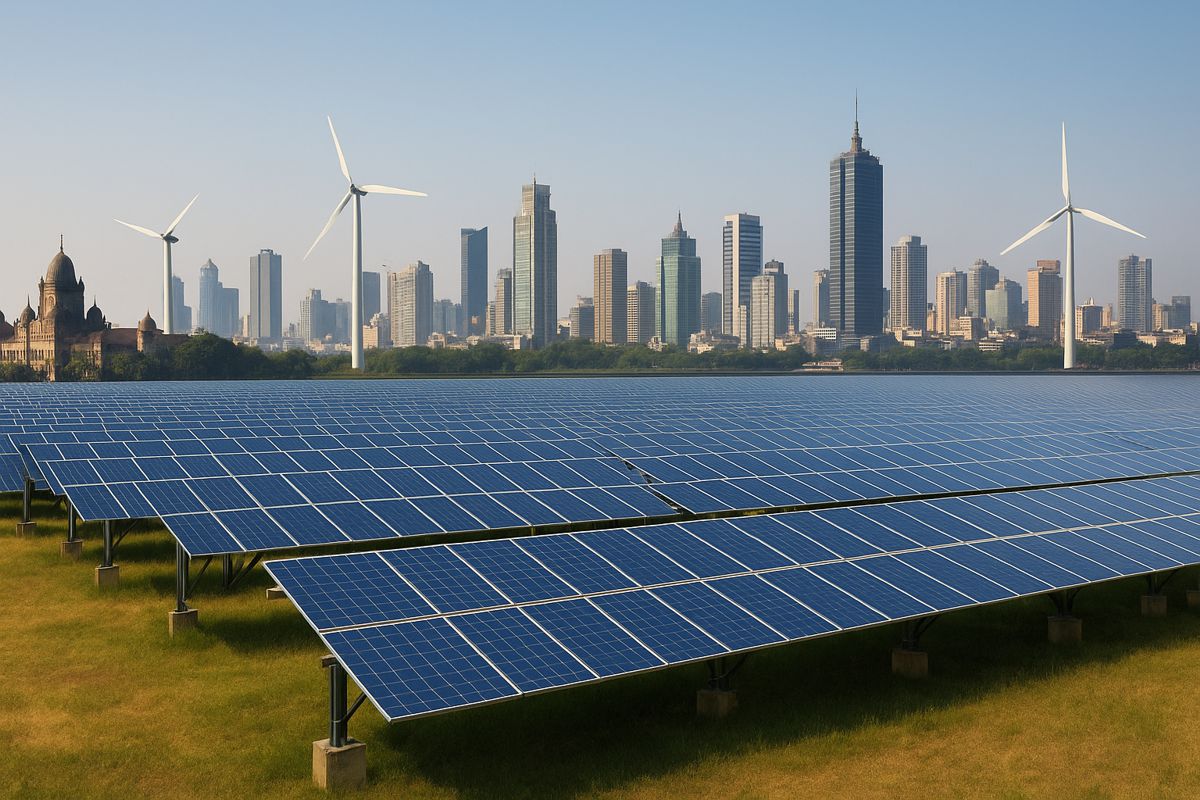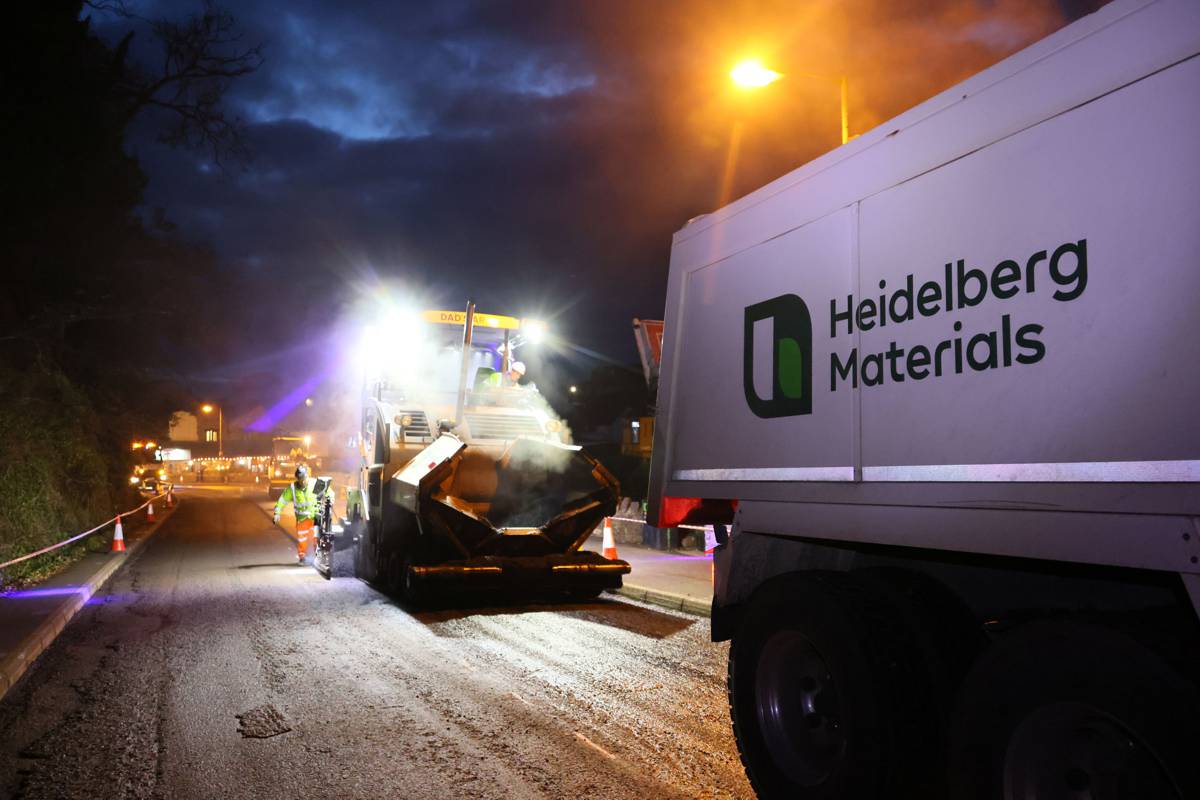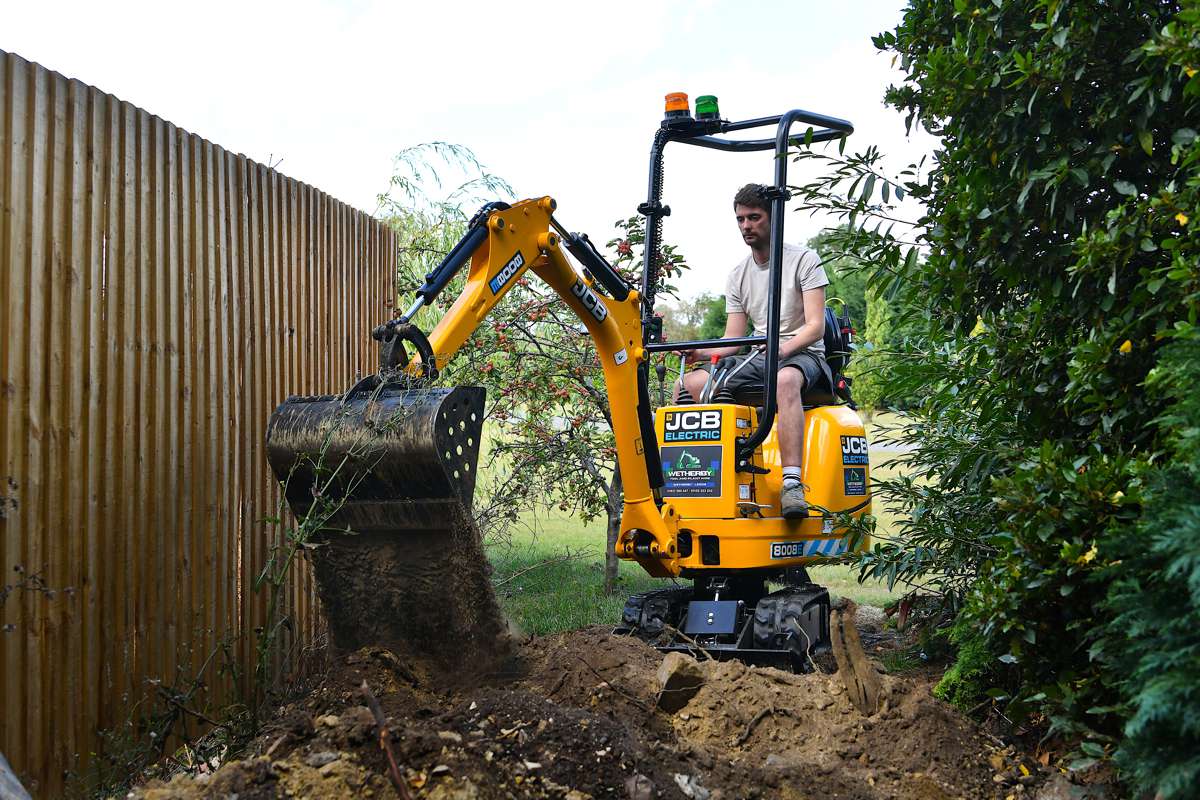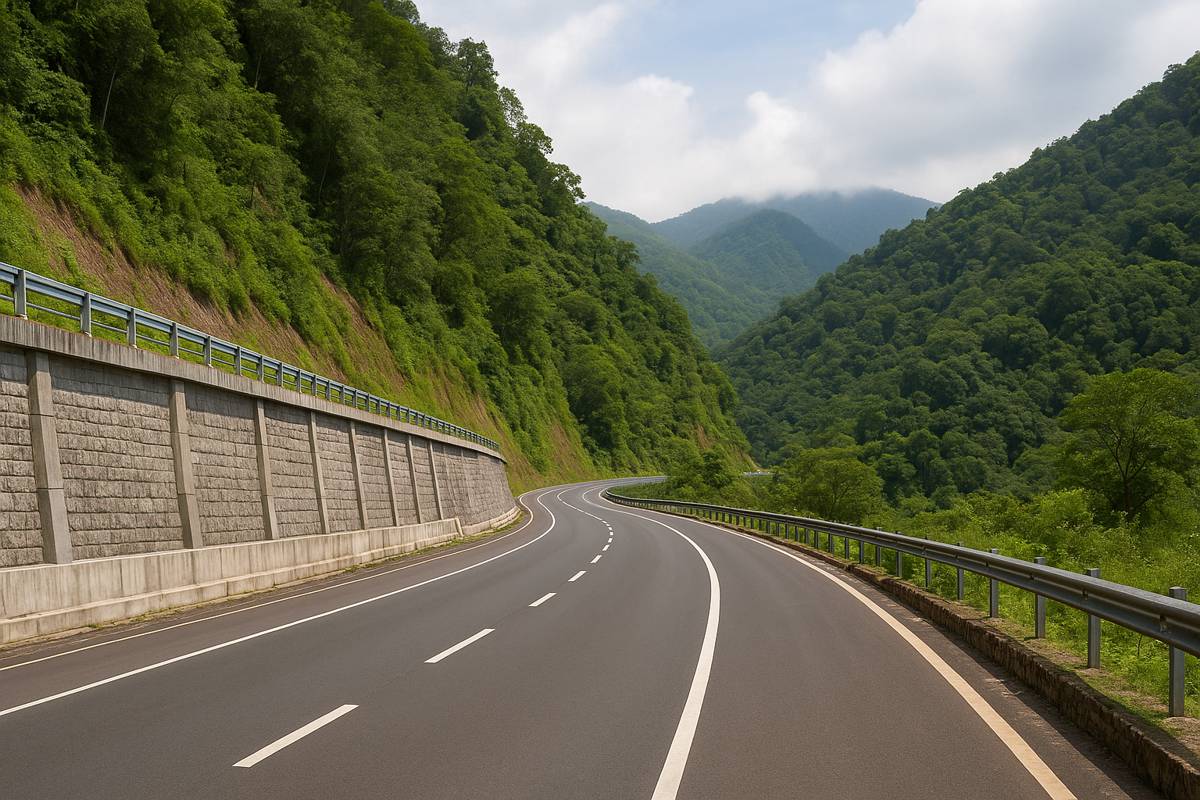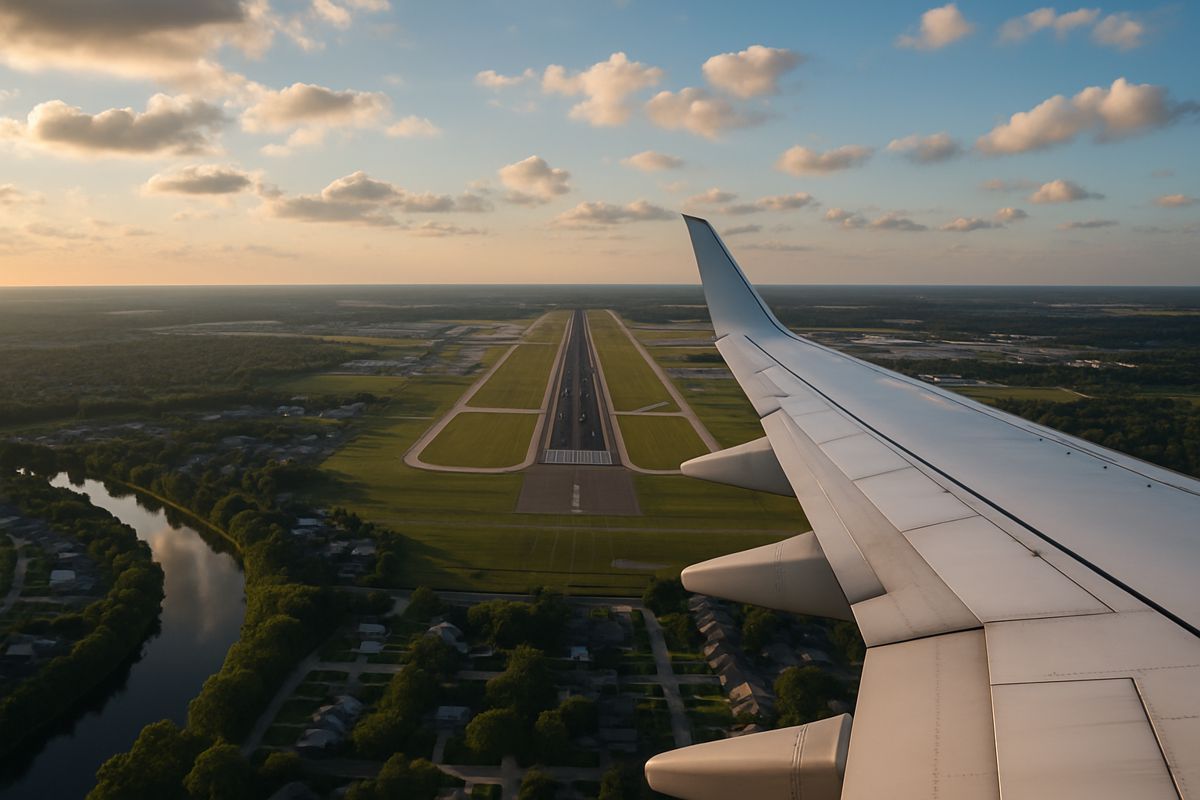Environmental and social impact of expanding Jomo Kenyatta International Airport in Kenya
Jomo Kenyatta International Airport (JKIA) is Kenya’s largest aviation facility, and the busiest airport in east and central Africa. It serves as a transit hub for major airlines as well as the gateway for visitors to other Africa’s airports. The airport also serves as a major cargo center for both inbound and outbound goods.
The Government of Kenya, in its Vision 2030, recognised that an improved and expanded airport infrastructure is critical to the realization of the long-term development aspiration of the Country.
In line with this vision, the proposed modernization and expansion of JKIA is aimed at strengthening the competitive position of the airport as a regional logistical hub and a key gateway into East and Central Africa. The airport currently operates a single runway, which was developed in 1978, and whose configuration is undermining operational efficiency at the airport in terms of delays to aircraft movements at peak hours. Isolated incidents on the runway in the recent past have also impacted negatively on the reliability of flights to and from the facility.
These challenges, and the desire by the Kenya Airports Authority (KAA) to make JKIA a hub for regional air transport require improvements to its infrastructure to cope with the projected increase in air traffic. The existing runway has a potential capacity of approximately 35 operations per hour (Ops/hr) / 150,000 movements per year, and is fast approaching saturation point with the current estimated average aircraft movements in excess of 30 ops/hr at peak hours, resulting in increasing aircraft delays. The construction of a second runway, which is one of the flagship projects under the Vision 2030, will contribute to meeting the projected traffic increases as well as achieving the strategic objective of making the airport a regional hub.
The main objectives of the proposed JKIA Airfield Expansion Project are two-fold:
- To improve reliability of air transport to and from JKIA by reducing aircraft delays at peak hours and eliminating costly flight diversions arising from incidences on existing runway, and
- To expand airfield capacity for the new generation (long-haul) code E aircrafts such as Airbus A380 that would be attracted to JKIA after the Government secured approval for direct intercontinental flights to the US in 2016 in keeping with her long-term development objectives and priorities under Vision 2030 of enhancing economic efficiency, fostering international trade, and facilitating long-haul tourist flows in the Country.
KAA has made a commitment to ensure that the development of the proposed second runway will comply with the environmental and social safeguards requirements and in accordance with the established Kenyan laws and regulations as well as International Civil Aviation Organization’s (ICAO) environmental and social guidelines. The Environmental Impact Assessment (EIA) Regulations (Kenya Gazette Notice No. 56 of 13th June 2003) provide for conduct of environmental impact assessment study for projects of this nature. To that effect, the KAA has conducted an Environmental and Social Impact Assessment (ESIA) for the project and prepared a detailed Environment and Social Impact Assessment Study Report which is outlined below.
The ultimate goal of the ESIA Study was to identify anticipated impacts and cumulative impacts resulting from the proposed project, determined on the basis of the baseline conditions established during the field work and information obtained from the documents reviewed as well as consultations with key stakeholders.
The ESIA/ESMP has also been prepared to comply with African (AfDB) Integrated Safeguards System (ISS) whose 4 Operational Safeguards (OSs) out of 5 are applicable to the project. These are:
- Operational Safeguard 1 on environment and social assessment,
- Operational Safeguard 3 on biodiversity and ecosystem services relevant to conservation and promotion of sustainable use of natural resources,
- Operational Safeguard 4 on pollution prevention and control, hazardous materials and resource efficiency which covers a wide range of impacts arising from pollution, wastes and hazardous materials management, and
- Operational Safeguard 5 on Labour conditions, health and safety, all of which are a major concern in this project.
- The fifth OS which was found not applicable to this project is Operational Safeguard 2 on involuntary resettlements, land acquisition, population displacements. This project does not trigger these impacts.
Brief project description and key components
The project components with relevance to environmental and social assessment include:
- The Runway Construction Civil Works involving construction of a 4.8 km long runway and connections to the taxiway and rapid exit taxiways, all equipped with CAT II equipment in compliance with latest edition (July 2016) of the ICAO Aerodromes Rules and Regulations;
- Navigational Aids (NAVAIDS);
- Reconfiguration of Air Traffic Control (ATC) tower;
- Provision of meteorological systems;
- One firefighting station for the new runway; and
- Construction of an Earth Embankment including tree planting as a noise buffer/barrier between the new runway and the neighbouring Syokimau Community.
The proposed second runway is located to the southeast of the existing passenger terminal and runs parallel to the existing runway RWY 06L/24R, and will therefore be referred to as RWY 06R/24L. The runway is proposed to lie on Coordinates 01º 21’ 19.81”S and 36º 55’ 03.89”E for the 06R threshold. The runway pavement edge will be 2.35km south of the existing runway pavement edge with a westward displacement of about 1.75km. The physical runway corridor will be wholly within the JKIA grounds with the closest distance from the boundary being about 300m. The runway will comprise a pavement 75m wide and 4.8 km long with shoulders, drainage and taxiways.
The specific components will comprise the following, among others;
- 6 right angle exit taxiways serving each end of the runway into a parallel taxiway to link into the terminals.
- 4 rapid exit taxiways two from each direction incorporated to reduce the aircraft residence time on the runway.
- Two connective taxiways linking the proposed second runway and existing runway as well as the aprons at the existing terminal.
- Drainage systems along pavements designed to capture the maximum surface runoff discharge.
- Appropriate instrumentation lighting and signage, and
- Fire rescue installations.
Environmental setting of the project area JKIA lies on a transition zone between Nairobi and Machakos Counties, but entirely in Nairobi County. However, there are significant influences into Athi River Sub-county of Machakos County where sections of the flight corridor fall. The flight corridor borders Syokimau residential areas to the south of the airport grounds with the boundary about 300m at the closest and up-to 2km at the farthest. However, the physical runway pavement will be wholly confined within the airport grounds and will have no direct physical linkage with the immediate neighbouring settlements.
The airport is located in Embakasi, a suburb to the south-west of Nairobi, Kenya and situated 15km from Nairobi’s Central Business District, and at the edge of the city’s built up areas such as the Syokimau estate which is at the approach to the proposed runway. JKIA lies on a transition zone between Nairobi and Machakos Counties, but entirely in Nairobi County. However, there are significant influences into Machakos County, Athi River sub-county. Notable sections of the flight corridor, therefore falls within Machakos County.
The Mombasa Highway runs adjacent to the airport, and is the main access route between Nairobi and the airport.
The Nairobi National Park is situated approximately 5km to the west of the airport and it is the main influencing ecological factor in the area, with a section of the park being directly below the approach corridor to the proposed runway (and also the existing runway), though aircrafts are notably at about 400 – 600m average vertical distance from the ground.
Other conservation areas to the east of the airport include Donyo Sabuk National Reserve near Kilimambogo (50km away) and a number of ranches in Machakos County (lying between 10 and 20km from the airport). The conservation areas hosts various wildlife species, the common species being grazers (buffaloes, zebras, giraffes, antelopes, etc.). Four of the big five, including Lion, Buffalo, Leopard and the Rhino are present, with the exception of the Elephant that is absent due to the carrying capacity challenges. Others include cheetah, serval cats, crocodiles, snakes, monkeys and baboons. There is also notable presence of a variety of birds.
With regards to air quality conditions, baseline samples taken from the project corridor gave the following air quality characteristics;
- Carbon dioxide proportions at the sampling points – at 10% of the WHO limit
- Nitrous oxides – at less than 2% of the recommended WHO limit
- Carbon monoxide gas not detected
- Sulphur oxides – at 42% of the maximum allowable limit (WHO)
- Hydrocarbon particulate matter (smoke) – at 50% of the recommended WHO limit
- Particulate Matter – less than 50% of the recommended WHO standard,
These were found to be below the World Health Organization (WHO) exposure limit.
On the other hand, baseline Noise level measurements showed ambient noise levels to be relatively low and compare well with the conditions in the neighboring Syokimau residential areas. Baseline noise measurements showed that the impact of existing runway on the neighborhood is within acceptable limits and below 55dB(A) apart from the locations directly below the take-off funnel which experience occasionally slightly higher noise levels of up-to 64.6 dB(A).
Major environmental and social impacts and climate change risks
By virtue of its location wholly within the airport land boundaries, the runway project will not require any displacement of people, institutions or businesses to pave way for its construction as most of these are approximately 300m from the closest boundary point. In addition, although aviation activities may have impacts outside the boundaries, especially arising from landing and take-off events, the impacts will be limited within defined flight corridors.
Implementation of the proposed second runway project will add to the overall positive impacts associated with the ongoing airport improvement projects. The resulting increase in traffic and enhancement of the airport as an aviation hub in the Central and Eastern African region will have overall positive impacts to the country in economic terms. In general the airport is also a major factor impacting positively on property values in areas around the airport.
The construction phase of the runway is not expected to significantly impact surrounding areas as impacts associated with its construction will largely be limited to the airport grounds. The site is also placed outside the active zones of the current airport operations, including the terminal areas, live airfield and public areas. Issues of excessive noise, waste generation and intrusion into sensitive areas of the airport are therefore not likely during the construction phase.
Other positive impacts associated with the construction phase will include:
- Source of income through creation of employment opportunities and market for construction materials,
- Increased demand for rental housing and food supplies in the neighbouring areas to the construction workforce, effectively enhancing income to the local investors, including women engaged in food preparation.
The project also intends to provide 5 ambulifts to facilitate accessibility of aircrafts by persons with disabilities (PWDs) at some US$1.25 million.
Negative Impacts
Most of the anticipated negative impacts will be triggered both during construction and during the operations phase. Whereas the proposed runway is located within the airport grounds, the flight corridors associated with the runway (an indeed with the current runway) spreads out beyond the airport boundaries, affecting areas lying below the approach corridors. The indirect linkages of the runway operations including noise, emissions and security considerations may therefore arise as sections of the residential areas in Syokimau and Embakasi areas fall close to the approach.
Other concerns of the neighbouring communities regarding the proposed runway development include:
- Possibility of negatively impacting economic activities,
- Conflicts with the public amenities during construction (access roads, drainage and water supply),
- Noise and vibration, and
- Safety from aircraft operations. The site is also evidently currently being used as grazing area by some pastoralists and this could be a risk to aircraft operations.
Key sources of negative impacts during construction will include, among others:
- Earth works (excavations) and associated activities such as top soil stripping (including vegetation removal),
- Moving spoil and other wastes,
- Sourcing and haulage of construction materials (gravel, aggregate, etc.),
- Development of the pavements,
- Construction of other ancillary facilities such as the fire emergency systems and fire sub-station, boundary fences and security systems, ILS and NAVAIDS. During construction, potential interactions are also expected to arise mainly from materials mobilisation (spoil and construction materials), surface traffic flows, excessive movements by the construction workforce, dust emissions and potential safety aspects linked to construction activities.
Negative ecological and biodiversity Impacts
Wildlife Incursion: Whereas the JKIA is shielded from Nairobi National Park by the Mombasa road corridor, the railway line and a number commercial premises, there is apparent conflict with wildlife (including giraffes, zebras and antelopes among others) migrating into the airport grounds from Donyo Sabuk Game Reserve and ranches in Machakos County in search of fodder, water and refuge. These animals apparently take advantage of the breaches in the fence on the eastern edge of the airport, thus enabling them to access the airport environs. This constitutes a major aviation risk.
Drainage concerns: The open drainage network around the airport has resulted in formation of emergent wetland sections and hence encouraging aquatic vegetation such as Typha ssp. and bulrush sedges. This wetland vegetation has attracted birds and insect species (including butterflies on transit) particularly where grass is dense. This wetland area has also provided wildlife habitat for many bird species mainly for nesting and source of food. Bird species including grey crowned crane, black headed heron, malachite kingfisher, blacksmith plover, spur winged plover, banded plover, wood ducks, black necked stilt, guinea fowl, cattle egrets, geese, blue winged teel among others are observed in the area. By being an attraction to various forms of wildlife, these ecological features are therefore a potential safety risk to aircraft.
Safety risks
Fire Safety: The aviation industry is very sensitive to fire incidents and fire risks and the operation of the second runway will not be an exception. Fire risk to aircraft as well as to airport infrastructure associated with runway operations cannot be ruled out. Safety of the residents and the industrial premises from fire accidents that could be linked to runway operation and other calamities cannot be ruled out. Linkages of the runway operation to the populations in the neighbourhoods with regard to safety are higher within the flight corridors due to risks of air crash for instance.
General construction and operations related risks: Other risks to safety include heavy trucks plying the roads that are also busy with private and public vehicles throughout the day (it is also part of the access to the airport and Embakasi, Utawala, Mihang’o and other estates).
Cumulative impacts
JKIA is progressively undergoing upgrading for the improvement of a number of services and infrastructure intended to enhance efficiency to achieve a competitive edge in the region as well as ensuring safety and security of the airport and comfort of the airport users. The improvement projects are varied and spread out the entire airport and include; among others;
- Wastewater management achieved through a comprehensive sewerage system linking the airport to the public sewage treatment plant in Ruai,
- Improvement of the pavements with a focus to the existing runway, taxiways and the aprons. Development of the proposed 2nd Runway is part of this improvement process,
- Upgrading of the services areas including the terminals, cargo, parking areas, etc. With these improvements, there is an accumulation of impacts both positive and negative. The effects of cumulative impacts include demand for increased management capacities, additional personnel, demand for enhanced surveillance and additional infrastructure. In addition to its own anticipated impacts, the second runway is expected to contribute to the overall cumulative impacts arising from the improvement projects, including:
Cumulative waste generation
Most of the Operators at JKIA generate wastes with characteristics similar to municipal wastes including paper, cartons, metals, glass, plastics, polythene materials, food remains, organic waste, textiles, scrap tires and rubber, construction debris and pavement litter. This waste is produced at various locations such as passenger lounges, cafeterias, bars, offices, aircraft cabins, shops, stores, warehouses and workshops among others areas.
During construction, waste generation will also be expected through spoil generation, construction debris and camp sites. It is anticipated that operation of the second runway will add to the existing volume of wastes generated due to increased passenger volumes into the airport, hence requiring correspondingly increased management capacity. Increased solid waste due to increased passengers and goods processing areas (wastes generated at check-in desks, waiting halls and cargo terminal) is expected to create capacity challenges to the existing waste handling mechanisms including holding receptacles, transfer means and removals. This may lead to waste accumulation at points of generation and transit locations. It also implies additional costs on solid wastes collection, transfer and disposal.
There is also generation of hazardous waste from the operations including medical wastes, scrap oil and grease, etc. Other wastes considered of hazardous nature within an airport setting include LAGs (liquids, aerosols and gels) intercepted from passengers, prohibited goods intercepted by customs dept. from the passengers, unclaimed goods in the custody of the airlines and customs, Contraband, Illegal plant matter (seeds, tubers, fruits, etc.), Residual unburned hazardous matter, Fire arms, Drugs and all materials that have expired in the custody of the generators. Among the point sources of hazardous waste generation include the Port Heath, animal wastes from the veterinary section, used oil and grease from workshops and pavements, Customs department, plant materials seized by KEPHIS as well as e-waste. The operation of the new runway is expected to increase volumes of similar wastes.
Cumulative Air emissions
Emissions in airports are associated with aircraft (that accounts for 98% of the total CO2 generated) depending on, among other factors; fuel type, aircraft type, engine type, load and flying altitude. The main source from the operations are experienced during landing and take-off events that are within the 1,000m above ground level, taxing-in, taxing-out, climb-out and approach landing.
During construction of the second runway, the main mobile sources of air pollutants/emissions are expected from vehicular traffic emissions from the moving trucks ferrying construction materials and spoil to and from construction areas within the airport. There are also potential emissions from the contractors batching plant as well as movement of trucks along the unpaved routes on site. On the other hand, introduction of a second runway will require additional ground handling equipment that will introduce additional emissions.
Since the main source from the operations are experienced during the landing and take-off events that are within the 1,000m above ground level (taxing-in, taxing-out, climb-out and approaching landing), higher concentrations are likely to be notable within the airport grounds and to some extent the immediate neighbourhood.
Cumulative Noise and Vibrations
During consultations with communities in the neighborhoods to the airport, a major source of concern was the issue of noise associated with aircraft operations and which peaks during flight events (landing, take-off and taxiing) of different aircraft types (large and small). The immediate impact zones for noise are expected to extend from the airport grounds to the immediate residential estates (Syokimau and to a lesser extent Embakasi and Mihang’o Locations) to the east. To the west, however, the zone of noise influence has limited developments as it largely includes areas of Nairobi National Park where human receptors are basically absent.
Other expected sources of noise will include ground support equipment and surface vehicles. The proposed second runway corridor is far from any ground stationary source of noise leaving the main influence to be from flight activities. The effect is also low due to the distance from the current runway (2.75km).
Enhancement/mitigation measures and complementary initiatives
The project impacts were determined to be site-specific, easily identifiable and mitigation measures readily identifiable. Key Impacts requiring mitigation include wildlife relocation, air emissions, dust management during construction, noise nuisance to the surrounding Syokimau community, drainage management, increased waste generation as well as aviation safety and general occupational health and safety considerations. In addition, the NEMA approval conditions set out arrange of mitigation measures and conditions that the project implementers have to take into consideration in implementing the project.
Air pollution and Dust control during construction
For all cumulative impacts, mitigation actions adopted for the second runway should be viewed from a perspective of the overall airport improvement projects. This will provide a harmonized approach to address and monitor cumulative impacts of all the improvement projects.
During construction, Contractors will be required to follow construction standards to ensure quality, safety and compliance with the established standards. During the construction phase, special care shall be taken by the Contractor to ensure transport safety including maintenance of fleet and control of speeds so as not to foul the air with dust. Excessive dust may have dire consequences to aviation space and therefore must be checked through regular water sprinkling of routes used by trucks, or by application of appropriate hydroscopic materials on earth roads. In addition, the Contractor(s) must carefully select routes to be followed during movement of construction materials. All drivers must have the requisite training and competence to operate stationary and mobile equipment, and appropriate procedures developed by the Contractor(s) must be observed at all times. These may include loading and unloading procedures. The contractor must ensure that pollution from trucks is controlled by limiting the loads carried and that maintenance is carried out as scheduled.
Particular attention will be paid to minimize negative construction-related impacts to neighbouring communities by, among others; including maintenance of access roads used for materials deliveries, dust control, public safety and road safety enhancements. This will be the full responsibility of the Contractor(s) and the Supervising Engineer. Dust emissions during the construction period shall be controlled through watering and surface maintenance.
Wildlife relocation and management
To avoid further incursions of wildlife into the airport area by wildlife, Kenya Airports Authority will install an appropriate perimeter fence on the entire eastern edge of the airport grounds to keep off and secure the project area and lock out straying wildlife from entering into the airport grounds. It is also proposed to have an additional fence securing the runway, in addition to the perimeter fence. For the wildlife currently straying into the airport environs, KAA liaises with the Wildlife Department and Kenya Wildlife Services (KWS) to ensure safe relocation of any straying wild animals to appropriate safe havens. There will also be need to enhance control measures for bird attractants to avoid bird strikes. An action plan for relocation of wildlife is to be agreed with KWS.
Drainage Management
Contractors will ensure that drainage outfalls will be safe, especially those discharging into the residential areas. It is also proposed to consider storage of pavement surface runoff in dams for possible on-site reuse including for fire-fighting services, while all oil interceptors and grit traps from pavement drains should be maintained to protect downstream water sources.
Noise mitigation
For noise abatement, the project design has included provision for construction of a raised earth mound/embankment and indigenous tree planting in between the proposed runway and the surrounding Syokimau community to act as a buffer against noise impact due to aircraft landing and/or takeoff on and from the runway facility respectively. To achieve this, all excavated material and spoil earth material from the runway corridor area and other airport construction areas will be utilized for creation of the noise barrier running parallel to and along the boundary areas to the neighbouring residential estate of Syokimau. This will also solve the challenge of spoil disposal outside the airport grounds that would have had potential social and environmental problems.
In addition to being a noise buffer, the earth embankment will also need to be designed and landscaped for aesthetic suitability on both sides in accordance with established specifications under ICAO Guidelines.
Upon commissioning and commencement of runway operations, it is expected that the noise contour maps will be updated to map out the more realistic situation, spot noise measurements will be undertaken along the new flight corridor including the neighbourhoods. It is also planned to install noise probes strategically for noise monitoring, and ground services workforce will be provided with personal protective gear and enforce application
As further mitigation against noise impact, it is proposed to plant trees on top of the earth embankment. However, the selection of the tree species to be planted as part of noise abatements measures will be done carefully to avoid those species which could attract birds to the area. In addition, the tree planting program will be an excellent opportunity to explore engagement of youths in the actual tree planting exercise.
Management of solid wastes and other wastes
The Contractor will be expected to develop a comprehensive waste management plan for the construction period guided by the ESMP under this report as well as the Waste Management Plan from KAA and the NEMA Waste Management Guidelines. Construction work areas and the campsites shall be provided with appropriate solid waste bins and removal mechanisms defined at all times. All construction camp sites shall be guided by the JKIA Waste Management Plan. The capacity defined under the JKIA Waste Management Plan for the airport was projected to the year 2030, and therefore, adequate to cover the proposed second runway.
All liquid wastes shall be contained such as not flow into open drainage systems within and downstream of the work areas.
All hazardous wastes will be managed in line with the national regulations governing collection, handling and disposal of such wastes, and by licensed waste handlers. Inert solid waste materials (scrap metals, plastic, polythene materials, timber, etc.) will be made available for recycling onsite or offsite as a sustainable disposal option.
Mitigation against Occupational Health and Safety Concerns
Implementation of the project works and operation of the runway will be guided by the established safety procedures applied at JKIA and in accordance with the ICAO regulations.
The contractor shall be required to carry out external safety and health audits of the workplace at least once in every period of twelve months as provided in Section 11 of OSHA, and Section 13 of the Factories and Other Places of Work (Safety and Health Committees) Rules. Internal audits and inspections should be carried out by the safety and health committee constituted by the contractor as spelt out in Section 6 of the Safety and Health Committees Rules.
All employees are expected to be made aware of their obligations to comply with provisions of the Occupational Safety and Health Act (OSHA) of 2007 through use of appropriate personal protective equipment for construction workers, as well as provision of appropriate training programs to be organized by the Contractors. The training shall comply with provisions of section 12 of the Factories and Other Places of Work (Safety and Health Committees) Rules of 2004. Appropriate personal protective equipment shall be provided by the contractors to all employees so as to protect them from hazards associated with their work. These should include highly reflective jackets, helmets, hand gloves, hard boots, dust masks, ear muffs, safety harnesses when working at heights, and protective clothing.
Competent persons shall be in-charge and oversee site safety and appropriate arrangements will be made to ensure that safety and health committees are formed as provided for in Section 9 of OSHA and Section 4 of the Factories and Other Places of Work (Safety and Health Committees) Rules.
Fire safety
Appropriate notices prohibiting smoking in areas where highly flammable or highly combustible substances are manufactured, used, handled or stored shall be displayed at strategic locations in the work place and other appropriate locations. Fire detection systems shall be provided and maintained, to ensure that fire detection appliances are located in the appropriate places for immediate activation of an alarm or automatic fire extinguishing systems. Firefighting appliances shall also be provided for extinguishing fires at the workplace.
For general fire safety, in addition to the already existing Fire Station and two remote backup posts to respond to emergencies, the new project includes construction of a dedicated fire station closer to the new runway because the design and location of these facilities are such that the time required to respond to disasters at any point within the airport is the ICAO recommended three (3) minutes. Regular drills will be conducted during the course of its service to ensure that this response time is attainable.
Fire emergency protocols and emergency measures will continue to be governed by protocols, procedures, rules and regulations developed from local legislation and ICAO standards. These and other relevant safety rules and protocols shall also apply to the use and operations of fuel supplies from the adjacent Kenya Pipeline Company (KPC) fuel farm and the management of the fuel farm and the hydrant system by the Kenya Pipeline Company (KPC).
To minimize risk of incidents to communities along the flight path/corridor, efforts have been made to limit encroachments by settlements along the flight path.
Climate Change and GHG emission management
The project has been classified as Category III on Climate Risk. However, this notwithstanding, climate change issues have been considered in the project design by incorporation of the following activities:
- Optimizing of drainage designs through proper sizing and location of drains, culverts, and outflow sites including provision of settling ponds to retain water thereby preventing flooding on to the runway;
- Tree planting along the proposed runway to act as noise abatement measure and for carbon sequestration;
- Reconfiguration of ATC to facilitate preferential runway assignment resulting in less fuel burn and GHG emissions at the airport area;
- Provision of a standby solar power plant at JKIA to reduce GHG emissions from the existing thermal system in use; and
- Redesign of the airspace to ensure continuous climb departures and continuous descent approaches by aircrafts ensuring more efficient fuel consumption and less emissions.
As part of its Climate response, the Kenya aviation industry, through the Kenya Civil Aviation Authority (KCAA) has prepared the Kenya Action Plan for Reduction of CO2 Gas Emissions in Aviation Sector (2015). The action plan acknowledges that the aviation industry contributes to greenhouse gas (GHG) emissions but at the same time expresses the commitment which the industry has to reduce GHG emissions due to aviation activities.
It is envisaged that any actions that the aviation industry will be taking with respect to GHG emission reduction should be seen in the context of the wider global/international aviation industry consensus on emission reduction, as well as Government of Kenya (GoK) commitments to reduce GHG emissions through implementing a wide range of measures in various sectors, including in aviation. The GoK response to climate change is articulated in its National Climate Change Response Strategy (NCCRS 2010), and National Climate Change Action Plan (NCCAP 2013). In the aviation sector, specific measures proposed to achieve GHG emission reduction for both domestic and international operations include, among others, air traffic management improvements, aircraft emission reduction measures.
The Action Plan identifies five key measures that are expected to have the greatest environmental impact:
- Aircraft Related Technology Development
- Improved ATM and infrastructure use
- More efficient Air operations
- Regulatory measures, and
- Airport Improvements.
The Action Plan also highlights a second set of measures which are expected to have beneficial environmental results, and these include use of alternative fuels, international coordination, afforestation programs and flexible use of airspace allowing transgression into special airspace.
The GOK through the KCAA has committed to introduce a number of initiatives that will enable the industry achieve GHG emission reduction and these include:
- Encouraging investment in aircraft efficiency improvements and the development of sustainable biofuels policy;
- Monitoring and reporting Kenya’s aviation carbon footprint;
- Working towards a multilateral approach through ICAO for managing the climate change impacts of international aviation;
- Establishment an annual forum involving relevant Government agencies and industry to facilitate the exchange of information and ideas on mitigating actions and to discuss any obstacles to implementation.
In addition to the above, it is also understood that this project will specifically include components that will contribute towards the Government’s and KCAA’s committed to implementing concrete actions towards a greener aviation. These components will include:
- Inclusion of a tree planting component to serve not only as an additional sound buffer alongside the proposed earth embankment between the new runway and the neighbouring Syokimau Community, but also as a carbon sink.
- Optimization of drainage designs through proper sizing and location of drains, culverts, and outflow sites to prevent water retention thereby preventing flooding on to the runway.
These components will also be in line with Bank’s agenda to promote green investments that not only reduce negative impacts to communities but also contribute to GHG emission reduction through technology improvements, improved operational procedures that lead to fuel saving and carbon sequestration.
Social relations
While appreciating that the runway will not have a physical linkage to the neighboring communities, it will be necessary to establish long term social measures to ensure coexistence with the communities with respect to certain impacts including noise, vibrations as well as safety aspects. The fact that KAA has developed a Corporate Social Responsibility (CSR) Strategy should be seen as an opportunity to enhance the Organization’s visibility and promote harmony with the neighboring communities. Among areas of intervention especially within the immediate communities would include education, health, sanitation and youth affairs.
Environmental and social monitoring program
Environmentally sensitive aspects associated with the runway project have been identified through the ESIA study and the construction supervising Engineer together with the Contractor will be required to integrate the mitigation measures in the project implementation. It is also recommended that during the construction period, regular environmental reviews are undertaken to determine the level of compliance with the recommendations proposed in the ESIA, and a completion audit report be conducted and submitted to NEMA and other relevant authorities prior to hand over of the runway project.
In addition to the ESMP mitigation measures and the NEMA approval conditions, the environment and safety guidelines as well as the quality standards established at JKIA will be adhered to. The development of the runway will also be expected to comply with the environmental management requirements and social safeguards in accordance to the established Kenyan laws and regulations as well as ICAO environmental and social guidelines. It is planned that all key aspects relevant to environmentally sound operation of the project will be monitored, including, among others; noise pollution from work equipment, material sites, construction machinery as well as aircraft during operation of the runway, air quality and dust management and associated sources such as traffic and ground handling equipment and emissions from various sources, waste management, drainage management, wildlife management, construction materials management and related environmental and social impacts, occupational health and safety concerns as well as socioeconomic issues.
Internal monitoring of the implementation of ESMP shall be overseen by KAA’s Environmental and Social Experts, while external monitoring will be undertaken by the NEMA and the Directorate of Occupational Health and Safety. In a meeting with NEMA, they indicated willingness to be closely involved in joint monitoring of the project during both construction and implementation phase.
In order to ensure that the provisions of the ESMP have been fully integrated into the implementation process, KAA proposes to set up an ESMP Implementation Committee dedicated to the project. This Committee, with representatives from KAA (environment and safety departments), Consultant, Contractor, will oversee and manage the Project Environment, Health and Safety (EHS) matters. The ESMP Implementation Committee will play a critical role in oversight and monitoring on implementation of the ESMP mitigation measures and ensure their full integration in the implementation process.
The Committee will hold meetings and conduct inspections on regular basis (weekly or monthly) depending on the stage of project implementation. This Committee will also ensure that the ESIA license conditions, Environmental Management Plans and Health & Safety Management Plans are complied with, and will also undertake risk assessment and mitigation development activities for construction sites, camp sites and batching Plant.
In addition to KAA in-house monitoring, the AfDB’s periodic supervision shall involve Environmental and Social Safeguards Specialists to assure compliance with Bank’s safeguards requirements. Therefore, as part of its monitoring obligations, the AfDB will conduct regular supervision missions to ensure compliance to various ESIA covenants and to its own Operational Safeguards as stipulated in the Integrated Safeguards System. There is also a provision for an independent consultant under the project to undertake technical and Value-for-Money Audit including Monitoring & Evaluation services.
Public consultations and disclosure requirements
Extensive consultations were conducted as part of preparation of the ESIA report. Meetings with key stakeholders including project affected communities, national and county officials, and Civil Society Organizations (CSOs) active in the project area were conducted. During preparation of the ESIA, seven stakeholder and consultative public participation meetings were conducted from 5th to 27th August 2014 at various venues. Stakeholders were involved through interviews and consultation forums to give their views and opinions as stakeholders being beneficiaries as well as the potentially negatively affected persons. In all the meetings, there were fears that the residents would lose their houses to demolition as was earlier experienced in the past in Syokimau and Kyang’ombe areas. It was observed that there is minimal interrelationship between KAA and the JKIA neighboring communities as the agency was not “visible” in the neighborhood.
Phase one of the consultation meetings included in-depth consultations with key informants while phase two included mobilization and conducting of stakeholder consultative and public participation meetings. These consultations were undertaken at four levels as follows:
- In-depth interviews and discussions with KAA staff, national and County government personnel, private investors (commercial and industrialists) and individual resident members in the neighbourhood;
- Presentations and discussions with national government administration, resident organization representatives at JKIA;
- Stakeholder sensitization meetings at the locational levels chaired by the area Chiefs and;
- Consultative Public Participation meetings with resident communities chaired by the area Chiefs.
Among the issues raised by the participants and factored in the project design include: concerns over noise impacts to the neighboring residential communities, and relocation of wild animals currently grazing on the proposed site.
The AfDB preparation and appraisal missions also carried out consultations with key stakeholders and discussed a number of issues relevant to sound environmental management on the project. These included discussions with the Regulator (KCAA); airline operators, NEMA, KWS, development partners; and key government Ministries including the National Treasury and Ministry for Transport, Infrastructure, Housing and Urban Development (MOTIHUD).
However, because stakeholder engagement is a continuous process, it is expected that KAA will endeavor to enhance and sustain the engagement with neighboring communities even during the operations phase, especially with those communities near the flight path and which have concerns for noise pollution. This engagement shall also include discussions on KAA’s Corporate Social Responsibility (CSR) initiatives that take into consideration community views priority needs. Consultations with airline operators held on 14th July 2017 indicated general support for the project among the airline operators.
As part of the disclosure process, the bank will disclose the project ESMP summary to enable access by interested members of the public to make input as appropriate.
Institutional arrangements and capacity building requirements
The Kenya Airports Authority (KAA) shall be the Executing Agency for the project. The Kenya Airports Authority (KAA) is an autonomous organization established in 1991 through an Act of Parliament (The Kenya Airports Authority Act, Cap. 395) through the State Corporation Act and was structured to be headed by a Managing Director (as the Chief Executive Officer) who works under the instructions from a Management Board. The second runway, like the existing one, will therefore be operated within the existing JKIA management framework. In this regard, the environment and safety guidelines as well as the quality standards established at JKIA will be adhered to, with the overall project supervision and monitoring falling under the Managing Director of KAA supported by various staff whose job description will be relevant to the various aspects of the ESMP.
The Organization is charged with the umbrella responsibility of providing and managing a coordinated system of airports and aerodromes in the country. The organization provides facilitative infrastructure for aviation services within and Kenya and the rest of the world. With its head office at JKIA, KAA is incharge of support infrastructure and services for JKIA itself, Mombasa International Airport, WAP, EIA, Kisumu, Malindi, Manda and various other aerodromes around the country including airstrips in certain tourist destinations. KAA’s mandate includes the following;
- Coordinating operations in airports and aerodromes,
- Management of facilities within airports and aerodromes,
- The overall management and administration of airports and aerodromes, (iv) Provision of services and facilities necessary for aircraft operations,
- Ensuring good environmental, health and safety status of all airports and aerodromes.
The mandates and also require KAA to ensure provision of environmentally sustainable infrastructure backed with a consistent and structured approach to environmental matters associated to development projects and operation activities. It places a responsibility over KAA to ensure that all her projects follow an environmental due diligence process involving an in-house evaluation process that is guided by national, regional and international guidelines and standards.
To oversee the implementation of the ESMP, KAA currently has an Environment Manager responsible for environment as well as a Department of Operations and safety which handles aspects relevant to ESMP implementation, such as cleanliness, hygiene, sanitation and waste management around the airport. The mission was informed that KAA was in the process of restructuring and a new structure would be rolled out once this exercise is finalized. The Environment Manager’s oversight role will further be supported by an Environment Committee as indicated in 6.0 above.
Implementation of the ESMP shall be the responsibility of the Contractors and the Supervising Consultant, who are expected to engage in-house qualified Environmentalist/safety experts who will be responsible for implementation of the ESMP and all other related requirements, and provide regular periodic reports to the Environment Manager.
With these various layers of ESMP oversight complimenting each other, there should be adequate internal capacity to monitor ESMP implementation and ensure the project is implemented with due regard to environment and safety requirements. However, as the operations are expected to expand as a consequence of the second runway, it will be necessary to review if one environment officer will be adequate in the face of expanded operations. The mission was informed that currently KAA is undertaking internal restructuring that is expected to review, among others, the structure for environment management and oversight.
Estimated costs
The costs for ESMP implementation will be accurately defined once the detailed design scope of the project has been finalized. However, as in the case of the operation of the existing runway, KAA has the commitment to provide the required resources to ensure the project is operators on and environmentally and socially sustainable manner. The project ESIA report has provided estimates of up-to 30 million Kenya shillings to be used for monitoring purposes over the 30 months construction period.











